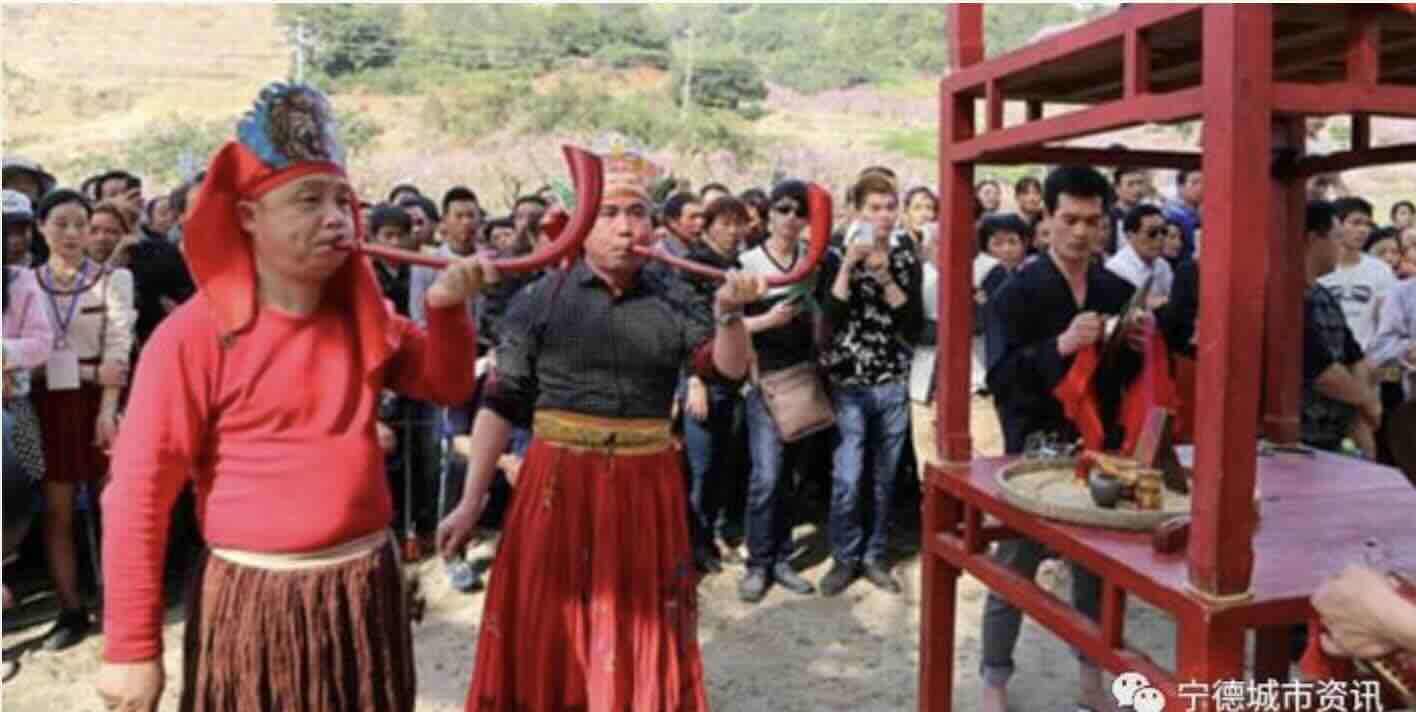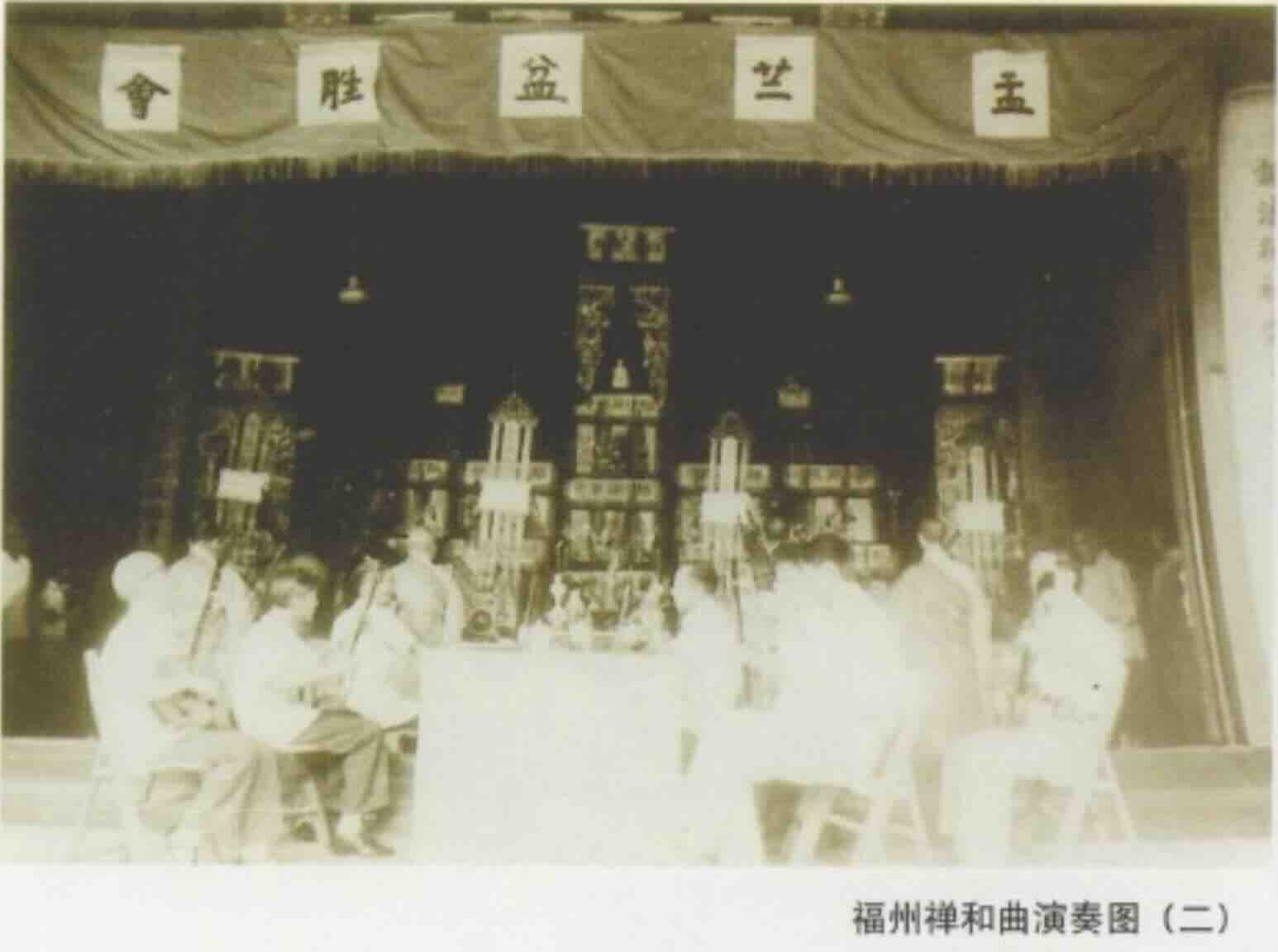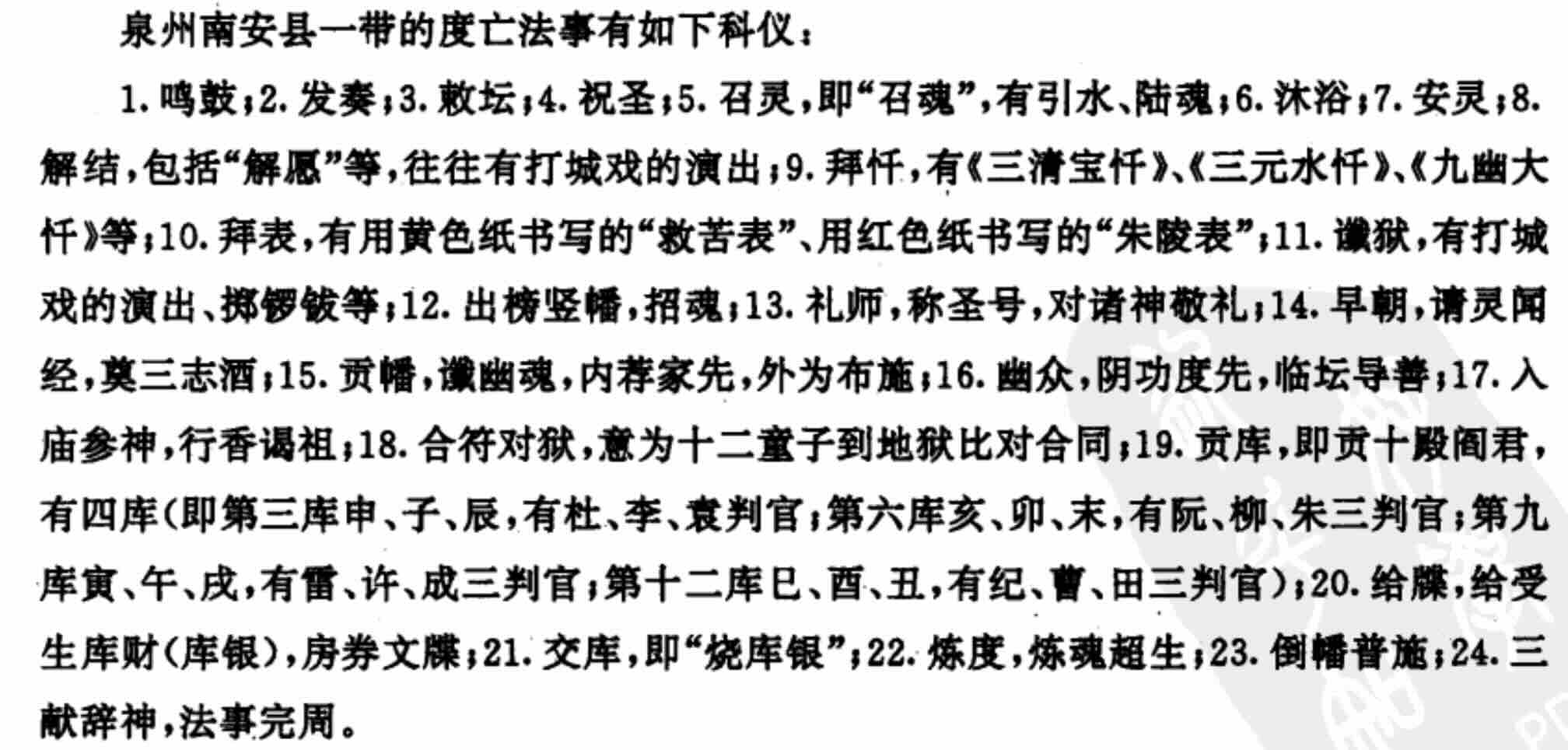
Fujian province in southeast China is one of the most vibrant areas to explore folk and ritual expressive cultures, which its local scholars have been particularly avid in documenting. Its traditions—always rooted in life-cycle and calendrical ceremonies—are known to outsiders largely through the Minnan region in the south of the province, particularly the treasury of nanyin ballads [1]—not least because much of the culture of the island of Taiwan across the strait derives from its Hokkien migrants (click here).
The visits of my early fieldwork years were inevitably superficial, “gazing at flowers from horseback” 走马观花. For background, Li Quanmin’s 1961 field report—during a lull between Maoist campaigns—was already based on collections by local cultural workers. After the hiatus of the Cultural Revolution, Fujian minjian yinyue jianlun 福建民间音乐简论 (1986) by Liu Chunshu 刘春曙 and Wang Yaohua 王耀华 made a worthy survey for the early reform era, including both vocal and instrumental genres.
Meanwhile the compilation of the monumental Anthology of folk music of the Chinese peoples was under way; and it’s taken me all this time to get round to browsing the 2,775 pages (!) of the two instrumental music volumes for Fujian,
- Zhongguo minjian qiyuequ jicheng, Fujian juan 中国民间器乐曲集成, 福建卷 (2001),
again with the experienced Wang Yaohua as editor-in-chief.
Ritual pervades all genres of folk expressive culture: in the Anthology, it is a major theme of the volumes for folk-song, narrative-singing, opera, and dance. In the instrumental music volumes, even genres that lack explicit liturgical content are also invariably performed for ceremonial occasions—but a further reason to consult them is that the specific rubric of “religious music” has been consigned there. I’ve described the flaws of the Anthology project in my
- “Reading between the lines: reflections on the massive Anthology of folk music of the Chinese peoples”, Ethnomusicology 47.3 (2003), pp.287–337.
Conceptually the Anthology‘s treatment of genres is rudimentary, but it opens up a world of local cultures. Apart from the valuable Monographs for opera and narrative-singing, its volumes consist mainly of transcriptions, of limited value without available recordings. For Fujian, whereas nanyin is amply documented on CD and film, most other genres are unique to the province and hardly known outside their own locale. So I find these volumes a revelation, opening up many perspectives (particularly for the late imperial and Republican eras) and making one of the most impressive introductions to the riches of expressive culture in China. It confirms my observations about the resilience of tradition in the PRC—for all the cultural riches of Taiwan, they are dwarfed even by the single province of Fujian, despite the traumas of three decades of Maoism there.
* * *
The main rubrics adopted for the instrumental volumes of the Anthology (a rough-and-ready national framework, based on the classification developed since the 1950s and later elaborated by Yuan Jingfang) are:
- “compound” (zonghexing 综合性, referring mainly to a substantial vocal component)
- “silk-and-bamboo” sizhu 丝竹
- “drumming and blowing” guchui 鼓吹
- “blowing and beating” chuida 吹打, with a more diverse instrumentation than guchui
- percussion bands luogu 锣鼓
- “sacrificial music” jisi yinyue 祭祀音乐 and “religious music” zongjiao yinyue 宗教音乐(Buddhist, Daoist, both temple and household—the latter covered far more comprehensively in separate projects by Chinese and foreign scholars).
Besides all the articles introducing particular local traditions, brief yet instructive sections are appended with histories of some notable groups (pp.2687–99) and biographies of performers (pp.2700–19), sampled below.
As throughout China, social performance is dominated by ensembles (see e.g. Liaoning), some occupational, others amateur. By contrast with the “conservatoire style”, instrumental solos play a very minor role in folk practice—here represented only by pieces for the zheng zither around Zhao’an and Yunxiao (pp.1683–1754), just east of Chaozhou in east Guangdong—another enclave for zheng solo repertoires.
* * *
Even for the Quanzhou region of south Fujian, while nanyin 南音 is a main focus, it is only part of a diverse scene. Nanyin has become a significant cultural element in the rapprochement between Fujian and Hokkien communities overseas. With so much research elsewhere, the Anthology section (pp.31–46, transcriptions pp.37–354) may not detain us long, though we should also consult other volumes, notably those for narrative-singing—both “music” (Zhongguo quyi yinyue jicheng, Fujian juan 中国曲艺音乐集成, 福建卷, pp.45–1102!) and the monograph (Zhongguo quyi zhi, Fujian juan 中国曲艺志, 福建卷).
Beiguan 北管 is a major genre in Taiwan (see again here), but in Fujian (where it is particular to Hui’an county near Quanzhou) it has a far less extensive repertoire (pp.355–60, transcriptions pp.361–97; biographies 2716–18).
Local traditions under “silk-and-bamboo” (a rubric as unwieldy as the others) include
- shiyin 十音 of the Pu–Xian region (Putian and Xianyou) (aka shiyin bayue 十音八乐, with the added format of shawms and percussion: for video clip, see under Walking shrill)
- “guyue” 古乐 of Zhao’an in the southern Zhangzhou region, related to Chaozhou ensemble music and the zheng zither repertoire
- shiban 十班 groups around west Fujian.

“Greater guchui” procession in Anxi.
Shawm-and-percussion bands, again serving life-cycle and calendrical observances, are ubiquitous throughout China, including all regions of Fujian—though they are hardly known outside local communities. Under the heading of “guchui” are introductions to
- Ningde in northeast Fujian (for a shawm band in Xiapu, see also pp.2696–8).
- around Fuzhou, Annan chi 安南伬 (and introduction to a renowned band in Linpu village, pp.2691–2)
- in Fuqing south of Fuzhou, jin guchui 金鼓吹
- “lesser guchui” of Xianyou and “greater guchui” of the Pu–Xian region.
 Biographies of Pingtan paizhi master Wang Shanglong and Chen Renzhen.
Biographies of Pingtan paizhi master Wang Shanglong and Chen Renzhen.
Since imperial times, shawm bands were often transmitted through regional military garrisons, such as
- longchui 龙吹 around Quanzhou (text pp.784–5, transcriptions pp.786–96), introduced in my Folk music of China pp.312–18, CD #12 (in the sidebar on this blog, audio gallery #15, with commentary here), and another instance is
- paizhi of Pingtan island 平潭排只 (text pp.663–4, transcriptions pp.665–708; biographies of Wang Shanglong 王 尚 龙 [1846–1917] and Chen Renzhen 陈人祯 [1911–88] p.2707, with a brief introduction to the latter’s band on p.2695).
 The Qinghe guan society in Changtai.
The Qinghe guan society in Changtai.
For south Fujian, further sections document
- shiyin 十音 around Quanzhou (Folk music of China, pp.318–20)
- naoting 闹厅 of Yongchun (cf. film footage of Yongchun migrants to Malaysia, here)
- shawm bands in Anxi and Xiamen
- for Changtai near Zhangzhou, greater guchui and lesser bayin—introducing the Qinghe guan 清和馆 society, whose masters trained over fifty groups in the vicinity.

Transmission of Raoping chui in rural Longyan, p.931.
- Around west Fujian:
- Raoping chui 饶平吹 of Longyan (and introduction to a village band pp.2695–6)
- shifan diao 十番调 of Yongding
- wuyin 五音 of Shanghang
- and genres in Wuping, Liancheng, and Changting.
- In central Fujian, bands in counties of Sanming municipality.
- In the north, shawm bands in counties of Nanping municipality
- In the east (opening vol.2), shawm bands of the She minority 畲族 around Xiapu, Fu’an, Ningde, and Yong’an.
“Blowing and beating”
Under the rubric of chuida (a more diverse instrumentation than the “guchui” shawm bands):
- around the provincial capital Fuzhou, shifan 十番 (for various groups in the region, see also pp.2692–4)
- shijin 拾锦 of Fuding, and genres in Fu’an and Gutian
- in the Zhangzhou region, Siping luogu 四平锣鼓 of Nanjing 南靖 county (see also p.2696).
- in north Fujian, Shifan luogu 十番锣鼓 [2] of Wuyishan, and groups in Pucheng.
Percussion ensembles include
- taiping gu 太 平鼓 around Fuzhou, and
- goutou 沟头 of Fuqing
- jin guluo 金鼓锣 of Zhouning further north
- genres in the south and west of the province.
Ritual
As we saw, while all genres of expressive culture are pervaded by ritual, in the Anthology the major rubric of “religious music” has been allotted to the instrumental music volumes. Though the articles of the lengthy section for Fujian (pp.1757—2683) fall far short of detailed monographs elsewhere (e.g. the Daojiao yishi congshu series for household Daoists), they constitute subsidiary references that may yet offer further clues (for early film footage, see Religious life in 1930s’ Fujian).

Exorcists, She minority. Source.
In the constant struggle with taxonomy (note the thoughtful studies of Catherine Bell), the editors’ ritual categories are unsatisfactory—in folk practice, even the terms “Buddhist” and “Daoist” are porous, as is clear from several volumes of the Daojiao yishi congshu. Before the listings of temple and household Buddhist and Daoist genres under “religious music”, they have inserted a section on “sacrificial music”, comprising
- “Three in One” (Sanyi jiao 三一教) groups in the Pu–Xian region (see also biography of Liu Maoyuan 刘茂源, b.1916, pp.2710–11)—note Kenneth Dean, The Lord of the Three in One: the spread of a cult in southeast China (1998)
- for the She minority around Ningde and Fu’an, a rather detailed article with the misleading title “music of mediumistic rituals” wushu daochang yinyue 巫术道场音乐 (pp.1837–42, liturgical texts with scores 1843–93; also biography of sixth-generation master Zhong Fuxing 钟福星 [b.1930], p.2718). Known here as wangshi 尫师 (an interesting character, wang), such ritual specialists are Daoist exorcists in the Lüshan or Maoshan tradition, presiding over the complex liturgical sequences of jiao Offering and mortuary rituals (cf. this 2017 article), just like their Han Chinese counterparts elsewhere in the province (below under “religious music” > Daoist > household)—as distinct from the self-mortifying spirit mediums who also play a significant role in Fujian rituals (see e.g. Dean’s splendid film Bored in heaven).

Chanhe ritual, Fuzhou.
For both simplicity and clarity, these sections might rather have been subsumed under the single rubric of “religious music”—which includes
Buddhist:
- liturgy of temple monks: Guanghua si temple in Putian, Kaiyuan si in Quanzhou, and Nan Putuo si in Xiamen
- household ritual specialists:
- chanhe 禅和 amateur ritual societies in Fuzhou (introduced en passant in my Folk music of China, pp.295–6)—another substantial section (see also biography of Xie Guiming 谢桂铭, b.1913, p.2709)
- xianghua 香花 household priests in Putian (cf. Meixian in east Guangdong).
 Household Daoist rituals, Putian.
Household Daoist rituals, Putian.
Daoist:
- liturgy of temple priests: Xiamen and Zhangzhou
- household ritual groups in Putian, Xianyou, and Nan’an (for the latter, see also biography of Daoist Li Shi 李湿 [b.1932], pp.2712–13)—the scores useful, at least, for liturgical texts. Again, these sections will merely supplement detailed studies by scholars of religion.
 Segments of mortuary rituals, Nan’an (again, cf. Ken Dean).
Segments of mortuary rituals, Nan’an (again, cf. Ken Dean).
* * *
Even limiting our scope to instrumental music, it takes considerable conceptual adjustment to broaden our view of the musical culture of Fujian from nanyin to a multiplicity of groups such as shawm bands and ritual specialists. Unsatisfactory as the Anthology may be, beyond merely documenting “pieces” it reminds us that the lifeblood of all these traditions is social—and ritual—practice. Many individual genres are doubtless the subject of articles in Chinese journals since the publication of the Anthology, and one could make a base in any one county, indeed any one village, combining a wealth of material by observing life-cycle and calendrical activities. Meanwhile, even before consulting several thousand further pages of the Anthology for vocal and dance genres, these volumes provide valuable clues to the local ceremonial cultures of Fujian, the life stories of its transmitters, and social change, making a gateway to our studies of ritual life.
[1] This is a common reductive view. In surveying Chinese expressive culture, we must always beware merely regarding south Jiangsu as silk-and-bamboo, Hebei as songs-for-winds, Shanxi as “eight great suites”, and ethnic minorities as “good at singing and dancing”—just as we may reduce Spain to flamenco, Indonesia to gamelan, and so on.
[2] Shifan 十番 is a rather common term for instrumental ensembles in both south and north China, the best-known traditions being the Shifan gu 十番鼓 and Shifan luogu 十番锣鼓 of south Jiangsu, authoritatively studied by the great Yang Yinliu before and after Liberation.
